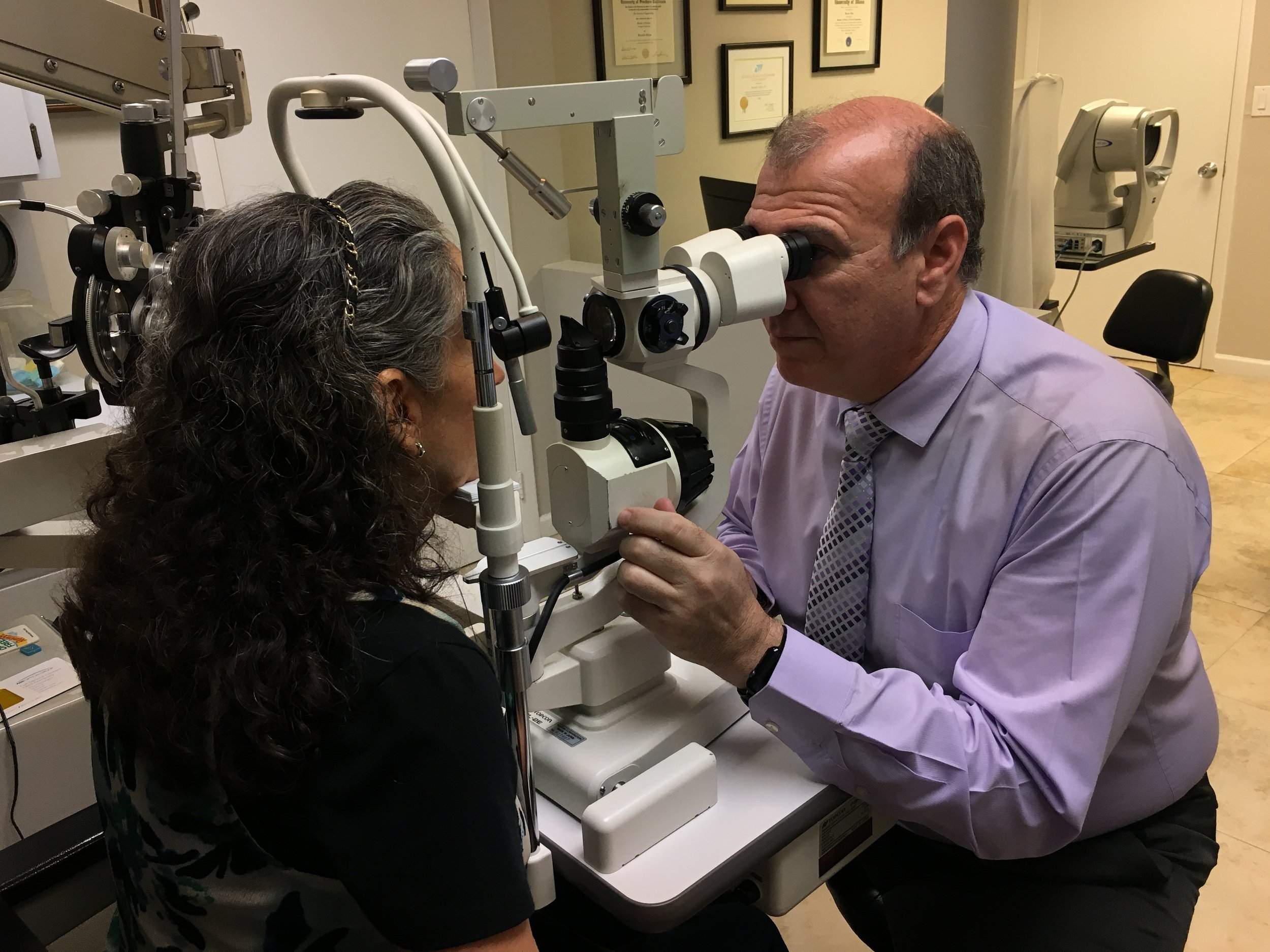Exploring the most up to date Technical Improvements in Optometry and What They Mean for Eye Doctors
From the accuracy of Optical Coherence Tomography to the nuanced insights offered by AI-driven diagnostic tools, these advancements are establishing new requirements in individual analysis and therapy. As these improvements penetrate the method, optometrists are faced with the difficulty of accepting these devices to boost patient end results.
Innovations in Diagnostic Equipment
Advancing the field of optometry, technologies in diagnostic devices have actually revolutionized the way eye treatment professionals examine and identify visual disabilities and eye conditions. The past decade has actually experienced substantial technological developments, allowing even more precise and detailed examinations. Optical Coherence Tomography (OCT), for instance, supplies high-resolution cross-sectional pictures of the retina, enabling the very early detection of conditions such as glaucoma and age-related macular degeneration. This non-invasive imaging technique has actually come to be crucial in contemporary optometric method.
An additional trick development is the intro of advanced corneal topography systems, which map the surface curvature of the cornea with accuracy. These devices are particularly helpful for fitting call lenses and diagnosing corneal disorders. In addition, electronic retinal imaging has actually transformed typical ophthalmoscopy, providing thorough, breathtaking views of the retina that assist in extensive visual assessments.
The advancement of wavefront aberrometry has actually additionally been important, enabling the analysis of refractive mistakes with unrivaled precision (Eye Doctor). This modern technology helps in customizing rehabilitative lenses and enhancing surgical end results for refractive surgical procedures. Jointly, these diagnostic innovations encourage eye doctors to provide premium patient care, guaranteeing very early intervention and tailored therapy approaches, inevitably improving aesthetic health and wellness end results
AI in Individual Monitoring
Building on the foundation of advanced analysis tools, the unification of fabricated intelligence (AI) in patient administration stands for a transformative leap for optometry. AI systems are progressively employed to enhance efficiency, precision, and customization in person care. By examining substantial quantities of data, AI can recognize patterns and predict potential ocular conditions, allowing eye doctors to tailor interventions a lot more properly. This ability is vital in managing persistent eye illness such as glaucoma and diabetic retinopathy, where early discovery and continuous surveillance are essential.
Moreover, AI-driven platforms facilitate structured individual communications and management procedures. Automated organizing, digital assessments, and customized follow-up strategies not only improve patient satisfaction but additionally enhance time monitoring for experts. These systems can triage people based on the urgency of their problems, making sure that those in essential requirement obtain punctual focus.
Furthermore, AI enhances decision-making by providing optometrists with evidence-based suggestions and therapy paths. By incorporating data from electronic health and wellness records, AI devices offer understandings that notify clinical choices, lowering the danger of mistakes and enhancing person outcomes. As AI remains to advance, its function in person administration will likely expand, reshaping the landscape of optometric treatment.
Breakthroughs in Retinal Imaging
In the world of optometry, retinal imaging has witnessed exceptional technical advancements that are boosting diagnostic capabilities and client treatment. Innovations such as Optical Comprehensibility Tomography (OCT) and fundus photography have revolutionized just how eye doctors picture and evaluate the retina.
Enhanced imaging techniques like OCT angiography are more refining diagnostic accuracy. This non-invasive technique maps blood flow in the retina, providing crucial understandings into vascular health without the requirement for color injections. Furthermore, adaptive optics innovation is being integrated into retinal imaging systems to fix eye aberrations, delivering unmatched photo clearness. Such advancements facilitate the identification of minute retinal adjustments that can symbolize illness progression.
Moreover, advancements in expert system are enhancing retinal imaging by making it possible for automatic evaluation of big datasets. These systems help optometrists in identifying patterns a sign of pathology, thus boosting analysis accuracy and efficiency. Collectively, these technologies are transforming retinal imaging into a cornerstone of contemporary eye treatment, boosting results and increasing healing possibilities.
Teleoptometry's Expanding Function
Teleoptometry is progressively coming to be an essential element of eye treatment, driven by innovations in electronic communication and analysis tools. This is particularly beneficial in rural and underserved areas where access to specialized eye treatment is usually limited.
The combination of helpful resources expert system (AI) additional boosts teleoptometry, making it possible for the evaluation of visual information and assisting in the detection of eye conditions such as glaucoma and diabetic person retinopathy. AI-powered algorithms can quickly analyze complicated imaging information, offering eye doctors with important insights that bolster medical decision-making.
Additionally, teleoptometry supports continuity of care via seamless assimilation with digital health documents (EHRs), permitting eye doctors to maintain comprehensive individual backgrounds. When consulting with different professionals., this guarantees that clients obtain individualized and consistent treatment even.
Despite these advantages, difficulties continue to be, including ensuring data safety and managing person assumptions. Nevertheless, teleoptometry stands for important link a considerable stride in the direction of more easily accessible, reliable, and patient-centered eye treatment. As innovation progresses, its role is positioned to expand better.

Future Trends in Eye Treatment
A myriad of innovative patterns is established to reshape the future of eye treatment, driven by technical improvements and the advancing requirements of individuals. One considerable fad is the integration of man-made intelligence (AI) in diagnostics, which assures to enhance the precision and effectiveness of eye evaluations. AI formulas can examine large quantities of data from retinal photos, potentially detecting problems like diabetic retinopathy and glaucoma earlier than typical approaches.
Furthermore, customized medicine is obtaining grip in optometry, with genetic testing informing customized therapy strategies. This strategy intends to enhance individual end results by tailoring interventions to specific hereditary accounts. Wearable technology, such as smart contact lenses, is likewise coming up, offering real-time tracking of intraocular pressure or glucose degrees, thus offering continual insights into ocular and systemic health and wellness.
The fostering of augmented truth (AR) and digital reality (VIRTUAL REALITY) in training and person education and learning is another emerging trend. These technologies supply immersive experiences that can boost understanding and skills both for eye doctors and people. As these trends progress, optometrists need to remain abreast of technological innovations to give cutting-edge treatment, making sure enhanced person outcomes and satisfaction in the dynamic landscape of eye care.
Verdict

Jointly, these analysis innovations equip eye doctors to provide remarkable individual care, guaranteeing early treatment and tailored treatment strategies, ultimately improving visual health and wellness outcomes.

As these innovations proceed to develop, eye doctors have to adjust and incorporate them right into technique, ultimately optimizing workflow performance and boosting the standard of eye care supplied to patients.